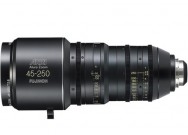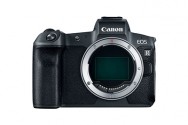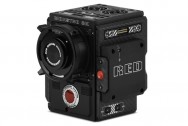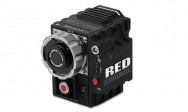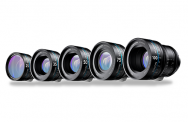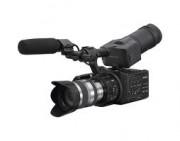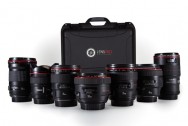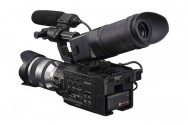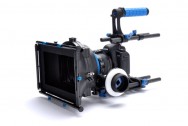Ms. Duy - 0938738350 (for English)
Address: 633/41 Điện Biên Phủ, Phường 1, Quận 3 ( Gần Nguyễn Thiện Thuật )
 Trực tuyến Trực tuyến |
128 |
 Hôm nay Hôm nay |
14303 |
 Lượt truy cập Lượt truy cập |
8023792 |

EF 16-35mm F2.8 I
Giá thuê: 100.000 đ/ngày

Until it was replaced by the Canon EF 16-35mm f/2.8 L II USM Lens , the Canon EF 16-35mm f/2.8 L USM Lens was my first choice for a full-frame, wide field of view, low light lens.
Measuring 3.3" x 4.1" (83.5 x 103mm)(DxL) and weighing 1.3lb (600g), the Canon EF 16-35mm f/2.8 L USM Lens is relatively small and light . Build quality is very high - indicative of itsCanon L Series heritage. This is a very nice handling and carrying lens. It is easy to take this lens with you - mounted or in a case.
"In a case" has special merit as a short focal length range (inhibited primarily on the long end) is one of the downsides for this lens. The Canon EF 16-35mm f/2.8 L USM Lens works great by itself, but it is especially useful in a kit with a 24-XXmm and/or 70-XXXmm or similar focal length range lens(es).
Utilizing Ring USM, the 16-35 L focuses very fast , quietly and accurately . The focus and zoom rings are nicely sized, turn smoothly and are nicely damped. This lens does not extend with a very small exception - the objective end lens elements move in/out slightly inside the lens barrel during focusing. All movement takes place behind the filter threads. If you have a filter installed, you will not have any external movement. Since the filter attaches to the lens barrel - which does not move, the filter also does not rotate. This matters when using a Circular Polarizing Filter or split neutral density filter. The common 77mm filter threads make sharing filters with Canon's complementing lenses easy.
The Canon EF 16-35mm f/2.8 L USM Lens is weather-sealed but I suspect that this lens requires a UV Filter to complete the sealing. The Canon EF 17-40mm f/4.0 L USM Lensshares the 16-35's small lens element extension feature, and the 17-40's manual indicates that a filter completes the sealing. The 16-35 manual does not specify this.
At 16mm, the 16-35 L is very sharp in the center even wide open (f/2.8) and improves little when stopped down. The 16mm full-frame corners are soft wide open (with a flat target - because of field curvature) and improve noticeably at f/5.6. At 16mm with a close subject distance, strong barrel distortion is noticeable even on a FOVCF body. Barrel distortion enlarges the center portion of the frame and shrinks the corners. This effect makes the center performance at 16mm seem especially good when in direct comparisons with lenses exhibiting less barrel distortion. You will likely notice this when comparing the 16-35 L's 16mm ISO 12233 resolution chart sample crops with other lenses and focal lengths. Distortion is much less of an issue with longer subject distances - I seldom find it to be a big issue in my real-life images.
While on the ISO 12233 chart sample crop subject, I should note that the 16mm samples require a relatively close subject distance. It is very hard to eliminate light reflection from the chart in the edge sample crops at this distance. You will notice lower contrast in the bottom 16mm ISO 12233 chart sample crops because of this.
By 20mm, the Canon EF 16-35mm f/2.8 L USM Lens' barrel distortion is dramatically lower and corners sharpness approaches center sharpness. Sharpness wide open is very good across the focal length range with the longer end being slightly weaker than the wide end. By f/4, this lens is very sharp across the frame.
One of the most notable negative features of my Canon EF 16-35mm f/2.8 L USM Lens is atendency to overexpose . As long as I do not clip highlights (because of this tendency), color and contrast from this lens are superb. CA (Chromatic Aberration) is very well controlled. A 7-blade circular aperture delivers excellent OOF (Out of Focus) blur quality. Of course, it takes a close subject and a wide aperture to get a significantly OOF background with this ultra-wide angle focal length range. Flare resistance is very good - very important as it is easy to get the sun in a 16mm image.
Users of 1.6x FOVCF bodies will enjoy near-vignetting-free images with the Canon EF 16-35mm f/2.8 L USM Lens. Full frame users will notice strong vignetting at 16mm f/2.8 and moderate vignetting at f/2.8 over the remaining focal length range. The full-frame vignetting is primarily noticeable in the outer corners of the frame.
Since filter-caused vignetting can become an issue with ultra-wide angle lenses, it is prudent to compare the vignetting with and without a normal UV filter attached before making a filter purchase for this lens. The comparison (link at top of review) in this case shows that a normal-thickness UV Filter does add a little vignetting at 16mm f/2.8 on a full-frame body. Is it enough to justify using a slim UV filter? You will need to answer that yourself, but I typically use a normal UV filter with this lens. However, since a Circular Polarizing Filter is about as thick as a normal UV filter, a normal CP Filter will cause noticeable vignetting at 16mm. Again, 1.6x FOVCF body users will not need to worry about the normal thickness filters causing vignetting.
Nguồn: www.the-digital-picture.com


